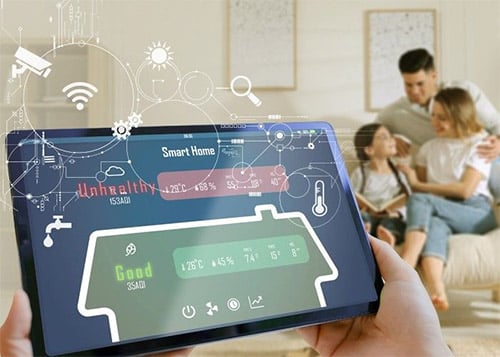Our indoor air quality (IAQ) is made up of many components impacting a healthy environment. When gases combine, the interaction and behaviors change the IAQ values. Single sensors solve single problems, sensor fusion solves unique challenges. Sensor fusion is required to ensure healthy air with the introduction of any gases into our indoor spaces.

Volatile organic compound gases (VOCs) are found indoors and can be mild irritants or carcinogenic. The family of pollutants is broad with sources ranging from cooking, cleaning products, or chemicals found in furniture and building materials. Other gases found indoors are Ozone and Nitrogen Dioxide, introduced when doors, windows, or ventilation systems are open. Ozone will chemically eliminate the presence of VOCs when combined. This would be a welcome scenario if the Ozone levels were in a healthy range; however, when measuring VOCs we use a baseline over time to ensure reliable reporting and to determine absolute IAQ values. When this baseline is impacted by other gases, as in the introduction of Ozone, the output can be compromised.

To maintain an accurate output of absolute VOC values, Renesas has released a firmware compensation engine that considers VOCs, Ozone, temperature, and humidity. These three sensors, ZMOD4410, ZMOD4510, and HS4001 are trained to utilize data and compensate for various interactions of gases that are present. We must have absolute IAQ values reported by these sensors with appropriate compensation rather than relative values to ensure a healthy environment.
Renesas’ ZMOD family of IAQ sensors continues to release trained embedded AI solutions targeting unique problems that impact our health. With the current firmware innovation, we now recognize the impact of our air quality when Ozone is introduced and can ensure accurate absolute values of our air quality. HVAC systems can autonomously react and improve IAQ to this change or notify users of conditions that may impact their health.
To begin your next air quality product development, get a Renesas sensor evaluation kit today!

